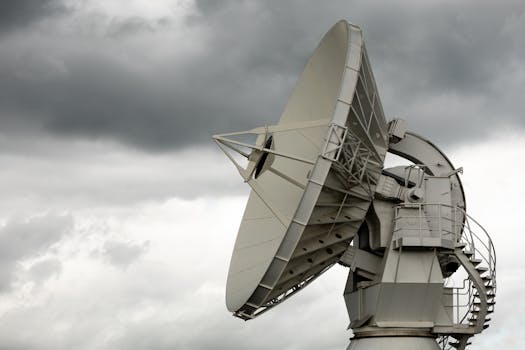GEO Satellites: Understanding the Role of Geostationary Satellites in Modern Telecommunications
GEO satellites play a crucial role in modern telecommunications, providing a wide range of services including television broadcasting, telecommunications, and weather forecasting. In this article, we will explore the role of GEO satellites in modern telecommunications and their importance in the industry.

GEO Satellites: Understanding the Role of Geostationary Satellites in Modern Telecommunications
GEO satellites, or geostationary satellites, are a type of satellite that orbits the Earth at an altitude of approximately 36,000 kilometers, remaining stationary above a fixed point on the equator. GEO satellites play a crucial role in modern telecommunications, providing a wide range of services including television broadcasting, telecommunications, and weather forecasting. In this article, we will explore the role of GEO satellites in modern telecommunications and their importance in the industry.
GEO satellites were first launched in the 1960s, and since then, they have become an essential part of modern telecommunications. One of the main advantages of GEO satellites is their ability to provide coverage over a wide area, making them ideal for applications such as television broadcasting and telecommunications. GEO satellites are also used for weather forecasting, navigation, and remote sensing, among other applications.
The Role of GEO Satellites in Telecommunications
GEO satellites play a vital role in telecommunications, providing a wide range of services including voice and data communications, internet connectivity, and television broadcasting. GEO satellites are used to connect remote or underserved areas to the global telecommunications network, providing access to essential services such as healthcare, education, and emergency services. In addition, GEO satellites are used to provide backup connectivity in case of outages or disasters, ensuring that critical communications services remain available.
GEO satellites are also used to provide high-speed internet connectivity, particularly in areas where terrestrial infrastructure is limited or non-existent. This has enabled businesses and individuals in these areas to access the internet and participate in the global economy. Furthermore, GEO satellites are used to provide television broadcasting services, allowing viewers to access a wide range of channels and programs from around the world.
The Importance of GEO Satellites in Modern Telecommunications
GEO satellites are essential in modern telecommunications, providing a wide range of services that are critical to the functioning of the global economy. The importance of GEO satellites can be seen in several areas, including their ability to provide coverage over a wide area, their reliability, and their flexibility. GEO satellites are able to provide coverage over a wide area, making them ideal for applications such as television broadcasting and telecommunications.
In addition, GEO satellites are highly reliable, with some satellites operating for over 20 years without interruption. This reliability is critical in telecommunications, where downtime can have significant consequences. Furthermore, GEO satellites are flexible, allowing them to be used for a wide range of applications, from telecommunications to weather forecasting.
Challenges Facing the GEO Satellite Industry
Despite the importance of GEO satellites in modern telecommunications, the industry faces several challenges, including congestion in the geostationary orbit, interference from other satellites, and the increasing demand for high-throughput services. The geostationary orbit is a limited resource, and the increasing number of satellites in this orbit is leading to congestion and interference. This can result in reduced performance and increased costs for satellite operators.
In addition, the increasing demand for high-throughput services is putting pressure on the GEO satellite industry to provide more capacity and better performance. This is driving the development of new technologies, such as high-throughput satellites and advanced propulsion systems. However, these technologies are also increasing the complexity and cost of satellite operations, making it challenging for operators to remain competitive.
Conclusion
In conclusion, GEO satellites play a crucial role in modern telecommunications, providing a wide range of services including television broadcasting, telecommunications, and weather forecasting. The importance of GEO satellites can be seen in their ability to provide coverage over a wide area, their reliability, and their flexibility. However, the industry faces several challenges, including congestion in the geostationary orbit, interference from other satellites, and the increasing demand for high-throughput services.
Despite these challenges, the GEO satellite industry is expected to continue to grow, driven by the increasing demand for telecommunications services and the development of new technologies. As the industry continues to evolve, it is likely that we will see new and innovative applications of GEO satellites, further increasing their importance in modern telecommunications.




